The Catalina macaw is a rainbow-colored hybrid parrot that is desired for the traits it shares with its parents—two of the most popular macaw species. Its flashy colors make it highly attractive for prospective parrot owners. However, it is often its comical personality, intelligence, and the ability to respond to training that seals the deal.
Species Overview
Common Names: Catalina macaw, rainbow macaw
Scientific Name: Hybrid Ara ararauna x Ara macao
Adult Size: 35 inches, weighing 2 to 3 pounds
Life Expectancy: 50 to 60 years
Origin and History
This breed was formed by crossing a blue and gold macaw with a scarlet macaw. Catalina macaws are found mainly in captivity. You seldom find a naturally bred Catalina macaw in the wild.
In bird breeding and hybridization, the father's genes are most often dominant. Catalina macaws most often look like scarlet macaws, since the male is usually a scarlet.
The Catalina is considered a first-generation macaw hybrid. It was derived from two naturally occurring or "true" birds. Since this is such a beautiful bird, some breeders use it for breeding a number of second-generation hybrid macaws (those from at least one hybrid bird). It is also rather common to find second-generation Catalinas that are a cross between two Catalina parents.
The Catalina has contributed its genes to many colorful macaw hybrids:
- Catablu macaw: Catalina crossed with a blue and gold macaw
- Camelina macaw: Catalina crossed with a Camelot macaw (second-generation hybrid)
- Camelot macaw: Catalina crossed with a scarlet macaw
- Flame macaw: Catalina crossed with a green-wing macaw
- Hyalina macaw: Catalina crossed with a hyacinth macaw
- Maui sunrise macaw: Catalina crossed with a harlequin macaw (hybrid)
- Milicat macaw: Catalina crossed with a miligold macaw (hybrid)
- Militalina macaw: Catalina crossed with a military macaw
- Rubalina macaw: Catalina crossed with a ruby macaw (hybrid)
- Shamalina macaw: Catalina crossed with a shamrock macaw (hybrid)
Temperament
Owners of hybrid macaws get the best of both worlds from their parent species. Scarlet macaws are known to be curious, feisty, and extremely active. In contrast, blue and gold macaws have a reputation for being more laid-back and gentle; they're also great talkers. Those with Catalina macaws describe their birds as being a perfect mix between the two.
Every bird—no matter the species—will have a unique personality that will reflect its upbringing. Catalinas can be cranky with very demanding social needs or extremely affectionate and charming with fun times ahead for its adopted family. Some Catalina macaws will become one-person birds. They may even prefer men or women exclusively, shunning people of the opposite sex.
The bird is likely to be social and accepting of people if it is introduced to a variety of people when you first bring it home. This species can make a good family pet as long as the children are not too young. Teach the bird and the children to respect one another from the start.
Highly intelligent, Catalina macaws respond well to training and can be taught to perform several tricks and to talk.
Speech and Vocalizations
Many Catalina macaws can attain a vocabulary of around 15 words and phrases over their lifetime. They can get loud and scream when excited, agitated, bored, or just to let you know the sun is up. This pet is not likely a suitable candidate if you have close neighbors, such as in an apartment building.
Catalina Macaw Colors and Markings
In general, hybrid macaws are bred primarily for their color traits. The Catalina macaw has a wide range of colors and patterns. There are slight differences from one generation to the next as well.
Most of these birds are primarily red or deep orange on their chests and bellies. Some have brilliant red-orange heads while others have a gorgeous blue-green crown. They tend to have green and blue feathers running down their backs and long tails. Many of them have gold feathers edging their wings and their tails.
The Catalina looks similar to the harlequin macaw. The two hybrids are often mistaken for one another. The most significant difference is the Catalina usually has the long, tapering tail of the scarlet.
There is no noticeable difference between male and female Catalina macaws. To tell them apart, you will need a DNA test, chromosomal test, or surgical sexing procedure. The DNA test is the most noninvasive option.
Caring for the Catalina Macaw
Being social birds, they must spend adequate time bonding with their owners to become happy, well-adjusted pets. If you are looking to adopt a Catalina macaw, make sure that you have at least 2 to 4 hours to spend with your bird every day. These parrots thrive on interaction and will become depressed and destructive if neglected or ignored.
As with all large parrots, these birds need a large cage that is no less than 4 feet wide and long by 5 feet high. The more space you can provide, the better off your bird will be. Give the bird plenty of perches and toys to keep it engaged.
Potential owners should think seriously about macaw ownership. Are you willing to be awakened early every morning by a screaming parrot? Can you accommodate the several hours of socialization and exercise every day? Also, consider the costs of owning a pet macaw. Veterinary bills, high-quality feed, toys, and cages all add up. If you can't provide your bird with the best of everything, think about waiting to adopt one until you can. The more that you spoil a parrot, the better your pet ownership experience will be.
Common Health Problems
The health care concerns for Catalina macaws are the same as other macaw species. Some of the more common illnesses seen in macaws include:
- Proventricular dilation disease (an intestinal problem, also called wasting disease)
- Psittacosis (a bacterial infection, also called chlamydiosis or parrot fever)
- Other bacterial, viral, or fungal diseases
- Allergies
- Beak malformations in chicks
Birds that are bored, have a poor diet, want a mating partner, or need a bath might resort to feather picking or plucking. Remedy this self-mutilating behavior by addressing their needs immediately.
Diet and Nutrition
In the wild, macaws eat a variety of seeds, plants, fruits, and nuts. Like any large parrot, feed a Catalina macaw a diet that includes a high-quality seed and pellet mix, along with fresh bird-safe fruits and vegetables. Each macaw, depending on its size, will eat about 1/2 to 3/4 cup of parrot mix and about 1/2 to 3/4 cup of fruit and vegetables every day. You can feed it once in the morning upon waking and at dusk before it goes to sleep.
Fruits that are good to feed to macaws include apples, pears, plums, cherries, grapes, oranges, bananas, mangos, papayas, and berries. Healthy vegetables include carrots, sweet potatoes, cucumbers, zucchini, and leafy greens. Never feed avocado; it is toxic to birds. As a treat, offer nuts like macadamias, walnuts, pecans, almonds, and filberts.
Exercise
Catalina macaws need plenty of activity to maintain top mental and physical condition. If you are interested in owning a Catalina macaw, you will need to supervise your bird for a minimum of 2 to 4 hours per day as it plays outside of its cage. This out-of-cage time is crucial to prevent boredom and allow the bird to stretch its wings and other muscles properly.
Provide toys to enrich your bird's activity time. Playthings can include climbing ropes, chains, bells, parrot swings, and wooden bird toys that they can clutch and chew. Destructible toys are fun for birds since they are interactive; the bird usually sets a goal to defeat the toy. Non-destructible toys will last longer, but macaws can get bored with them.
Beautiful and intelligent
Can talk and mimic human sounds
Long-lived
Tendency for loud squawks and screams
Requires at 2 to 4 hours of daily exercise, mental stimulation
Where to Adopt or Buy a Catalina Macaw
Contact a parrot adoption and education agency and ask if you can visit their birds. Seeing one of these parrots in its home environment will give you a feel for what it's like to live with one. Breeders sell Catalina macaws in the range of $3,000 to $5,000. Rescues, adoption organizations, and breeders where you can find Catalina macaws include:
- Adopt a Pet
- Petfinder
- Bird Breeders
More Pet Bird Species and Further Research
If you’re interested in similar species, check out:
- Green-Wing Macaw Species Profile
- Harlequin Macaw Species Profile
- Hyacinth Macaw Species Profile
Otherwise, check out all of our other macaw species profiles.
Related Article

Gloster Canary: Bird Species Profile
Gloster canaries are small birds that are bred for their shape instead of their colors or song. The
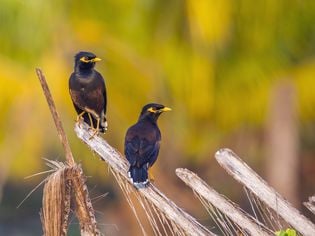
Mynah Bird: Bird Species Profile
If you want a chatty, intelligent bird to share your home, then the tropical mynah bird is the pet
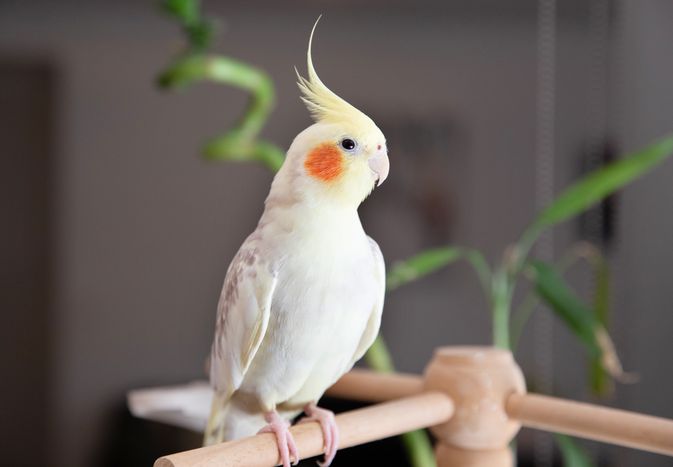
8 Top Small Pet Birds
Good things come in small packages and small pet birds can be excellent companions. They're gen
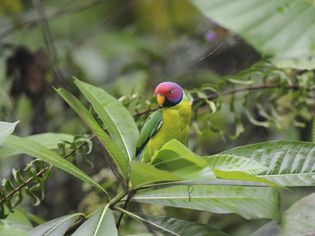
Plum-Headed Parakeet: Bird Species Profile
The plum-headed parakeet is a medium-sized parrot of striking beauty. This Asian parrot makes a goo
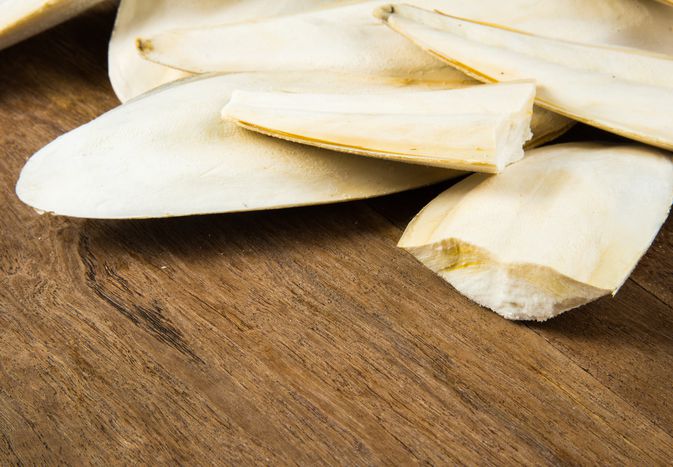
A Cuttlebone Helps a Bird Groom Its Beak While Providing Calcium
Cuttlebone—that funny, white oblong object shaped like a canoe—is found in bird cages everywher

Causes of Regurgitation in Birds
It's a scenario that is all too familiar for some pet bird owners—you are sitting with your b
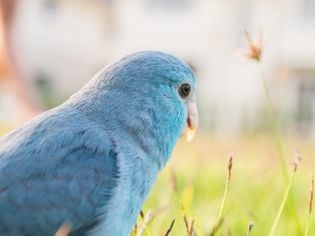
9 Top Blue Parrot Species to Keep as Pets
Although green is a dominant color in many parrots, you still can find several pet birds with beaut
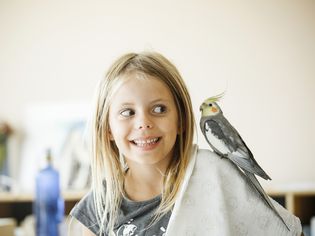
These 7 Birds Make the Best Pets for Kids
If your child has asked you for a pet with wings, there are many factors to consider before bringin
About WhiskerClub
We are a premier digital platform committed to delivering high-quality content to our readers. Our mission is to provide accurate, reliable, and engaging information that adds value to our audience's daily lives.
Our team consists of experienced content creators and subject matter experts who uphold the highest standards of professionalism. In an era of information overload, we curate content with care, ensuring our users receive only the most relevant and trustworthy information.
Beyond just reporting facts, we focus on depth and context. Through expert analysis, comprehensive research, and clear presentation, we help our audience gain meaningful insights and make informed decisions.
We take pride in being a trusted information source for our growing community of readers. Our user-first approach means we continuously adapt to provide content that meets our audience's evolving needs and interests.
Innovation and excellence drive everything we do. We're committed to improving our platform and services to deliver the best possible experience for our users.

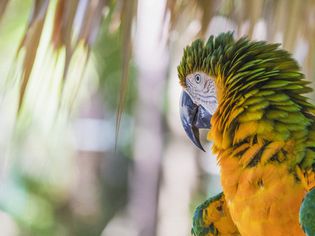
Comments on " Catalina Macaw (Rainbow Macaw): Bird Species Profile" :